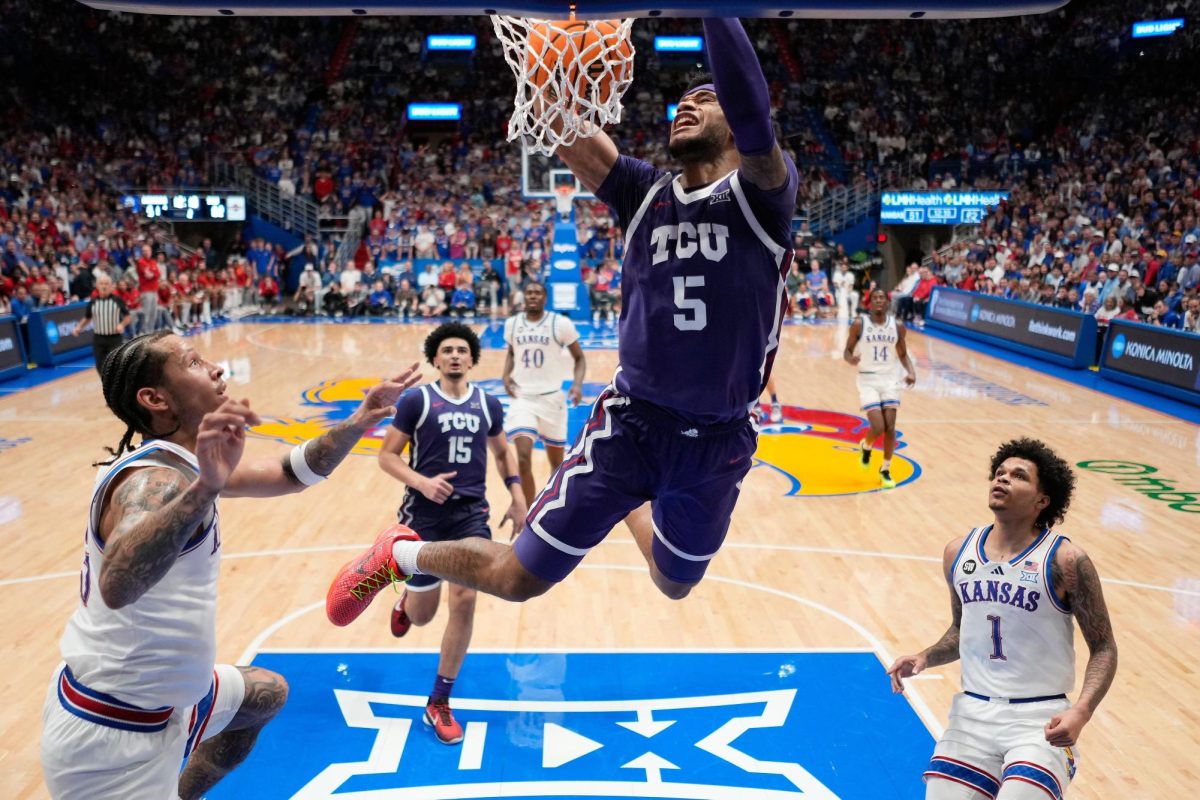TCU used volunteer committee’s help to exceed scholarship goal
Published Apr 17, 2012
Exploding enrollment in the nursing department did not hurt. Appearing in the Rose Bowl, for that matter, was not a negative either.
But both, combined with the Neeley School’s 75th Anniversary, as well as other university achievements, allowed for greater fundraising opportunities.
The university met its $100 million goal for scholarships before the 25th Annual Scholarship Dinner despite being behind two-and-a-half years ago, Don Whelan, Vice Chancellor for University Advancement, said.
In order to create a sense of urgency for fundraising, the university marketed the scholarship campaign separately and put a volunteer committee together, Whelan said.
Ron and Paula Parker, co-chairs of the committee , were elated all of their hard work paid off when they learned donors reached the goal, Parker said.
Meeting the goal reassured Parker that the university had strong academics and dedication to responsibilities, he said. Parker said alumni wanted to give back.
This is the highest scholarship fundraising goal in the university’s history. Whelan said the last campaign, from 1992 to 1998, raised $31 million for scholarships.
Ron Parker said there was no better feeling than knowing there were high-caliber students who would not have to worry about loans. He said through scholarships, the university recognized students who focused on academics as much as those in the athletic program.
“Having scholarships to offer them, we become competitive in a market of other universities trying to get the best and brightest students,” Paula Parker said.
Micah Vaughn, a senior biology major whose scholarship allowed him to come to the university, said the university offered him the most money. It was the deciding factor as to why he chose TCU, he said.
The majority of scholarship money raised in the campaign was for undergraduates, Mike Scott, director of Scholarships and Student Financial Aid, said.
Some donors designated a purpose for their donations, such as specific university departments, low-income students or whatever the university saw as its biggest need, he said. But not all did, and non-specific donations were divided among the university’s needs as they came in, Scott said.
Scott said scholarship donations came to the university either as yearly spendable gifts or endowed awards.
Endowed awards were given to the university as an investment in order to produce interest, Scott said. The interest was given away as scholarships.
A yearly gift was different, he said. The university could give out an entire yearly gift once it was donated.
The university already allocated some of the funds raised, but more recently pledged funds had not been designated to a specific purpose, he said.
Scott said fundraising for scholarships was focused in three areas: undergraduate, graduate and athletics. All three areas benefitted from the campaign.
The College of Fine Arts, saw an increase in scholarships, which would make it competitive against other schools.
Ashley Circo, a first-year pre-business major, said she hoped the university gave more scholarships to established students. The university does well with giving scholarships for high school academics, but should see how current students were excelling at the university, she said.
Ron Parker said scholarships for students and faculty-endowed positions remain the greatest priority for the future of the campaign.


